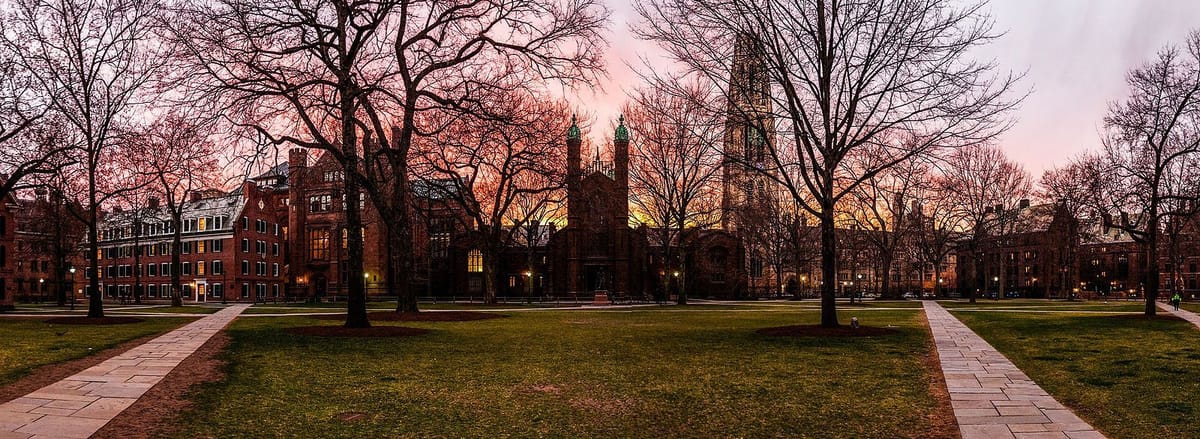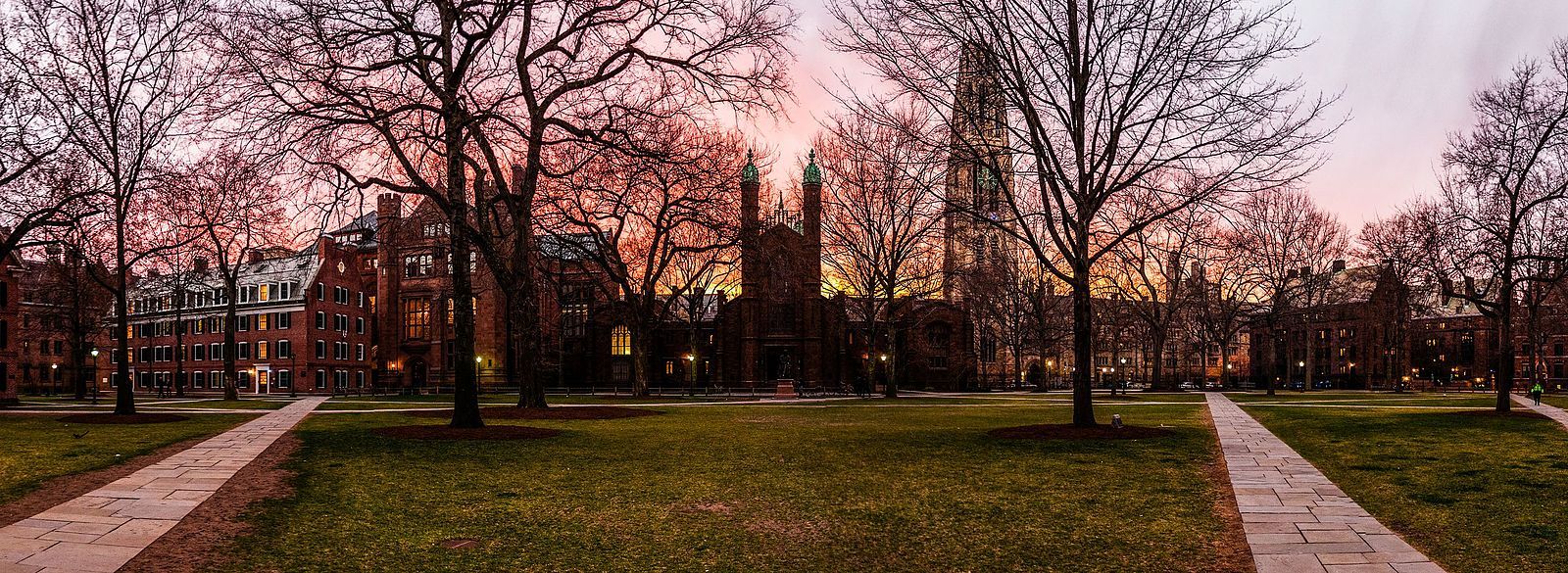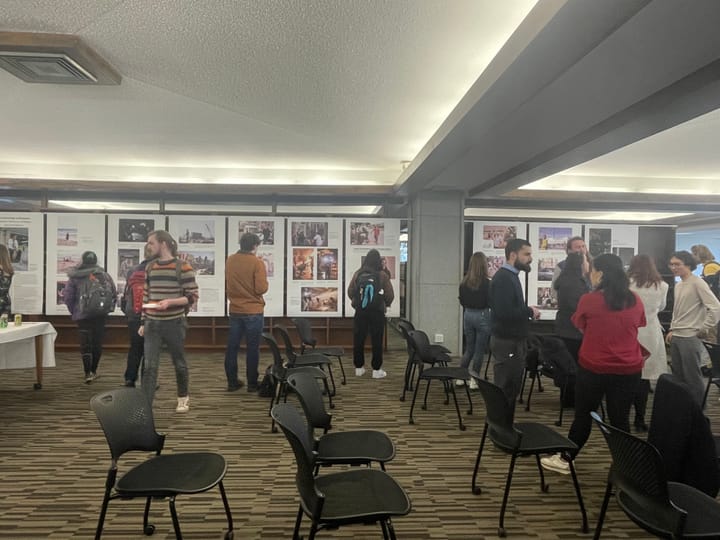Coping With Campus: The Isolationism of the Quad
In the first installment of his column, Coping With Campus, Managing Opinion Editor Dustin Copeland ’25 takes a brief look at the quadrangle as a tool in the myth-building of “college life.”

“College Life” is a sort of myth, defined by rituals enacted by students and administrators alike. There’s a reason people on Main Quad throwing frisbees or reading in Adirondacks or trying to put up hammocks look so unrealistically collegiate — those are images straight out of a brochure, acted out by students who looked at those brochures long before attending. The quadrangle facilitates those images as the essential organizing principle of a college’s beauty. Thereby, it is the primary mode by which a college mythologizes its importance.
The modern university, of publicly accepted degrees, of research and determined curricula, is an invention of medieval Europe. The university in this sense is not at all the first example of an institution of higher learning — far older centers of education have existed since at least four thousand years ago in places like Egypt, India, China, and classical Greece. However, the kind of university that informs the contemporary colloquial understanding of the word has its roots in 1088, in Italy.
The University of Bologna is the oldest university in continuous operation in the world (established nearly two hundred years before the first classes at Oxford). It is coincident with the city of Bologna in such a way as to be essentially indistinguishable from the air. In the U.S., college campuses stick out from surrounding areas, cloisters of rectangular symmetry and green courtyard-space — one of my favorite games as a senior in high school was to try and find schools that I planned on applying to on Google Earth simply by searching from the air as a bird might. If schools took after Bologna’s haphazard-but-integrated design, my game would have been much harder. Luckily for twelfth-grade me, later colleges would iterate on this initial form in their attempts to create an academic environment conducive to student success.
Oxford University is a collection of constituent colleges that departed significantly from Bologna’s congruence. Taking inspiration from the cloisters of abbeys and gated religious communities, the university effectively closed itself off from the surrounding city by building imposing, castle-like walls. The same Gothic spires that impress and inspire students of higher learning cowed and intimidated those plebeian outsiders who might dare to venture a glance inside that hallowed ground. College architecture thus co-opted religious imagery and architectural themes in order to shut itself away — to symbolically and literally isolate the privileged few deserving of education from those decidedly undeserved constituents of the dirty city.
Early college designers used this language of exclusion to promote student success, following a dictum of sacred and aloof focus on one’s studies to simultaneously assert the superiority of their universally well-off students and allow them to take pride in their facilities. If a student were to go to university (and, eventually, pay for the privilege), they had to be validated at every step in their commitment to “learning for its own sake.” After all, who would want to learn for the sake of learning in an office block? Doesn’t it feel so much better to be part of an in-group which gets the special right to live and learn somewhere beautiful, somewhere other (lesser) people don’t have access to? The quadrangle, as the essential organizing principle of a college’s beauty, is the mode by which a college mythologizes its importance. This structure, and the language of religious holiness from which it is derived, assists and legitimizes the rituals of student life, from initiation to graduation. To convince its students of their own importance, a university must be beautiful, no matter the conditions of the surrounding town. Luckily for the college’s constituents, those quadrangle walls are just as hard to see out of as they are to peer into.
Yale University has a budget this year of a little over $4.27 billion. New Haven, a city whose population numbers more than seven times that of Yale’s academic staff and students, has a budget this year of roughly $704 million. Certainly no small chunk of cash, but even if you multiplied the money the city has allotted for spending this year four times over, it still wouldn’t match Yale’s allocation. That disparity between college and town isn’t limited to Yale. Amherst College hasn’t committed to reparations that the town of Amherst has promised to fund, and private college endowments have increased wildly in the past year for the benefit of those schools and those schools alone. Colleges are not the places they are located in, and in fact, they function as completely separate entities, as if they truly are educational oases, far from civilization. A college quadrangle is a sort of courtyard. It’s space held and used exclusively by the privileged few, while remaining off-limits for most. Yale’s Gothic spires look like castle walls in a way that becomes literal on some level to both students and outsiders. Amherst College is up on a hill, and its quadrangle, too, is a space exclusive to only those of us who “deserve” to be here.

A quadrangle is the defining space of the college campus. It facilitates frisbee-throwing, academic inspiration, and community-making. But it also facilitates an insularity, an inwardness that is more exclusive than inclusive. College has always been a place for the privileged few, and, as we enter a new semester, I find it worthwhile to look back at the maps of the colleges that preceded us. Oxford’s medieval cloisters for their invariably Christian students are beautiful, sublime. They reappear at Cambridge, Harvard, Yale, UChicago, Bowdoin, and here. As we move forward, it might be worth investigating exactly what that implicit isolation means for Amherst students, and how our town-gown insularity might be changed for the better.



Comments ()